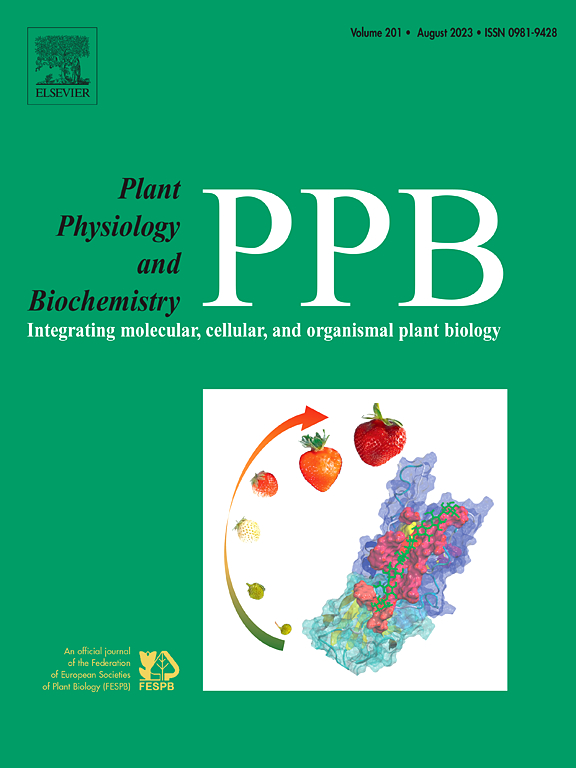24-Epibrassinolide treatment alleviates frost damage of apple flower via regulating proline, ROS, and energy metabolism
IF 6.1
2区 生物学
Q1 PLANT SCIENCES
引用次数: 0
Abstract
Frost damage to apple flowers significantly affects both the quality and yield of apples, potentially leading to substantial economic losses. This study investigates the application of the environmentally friendly plant hormone 24-epibrassinolide (EBR) on apple flowers to assess its effects under frost stress conditions. The findings indicate that exogenous EBR treatment maintained favorable flower morphology, mitigated pistil browning, and reduced ion leakage. Furthermore, EBR enhanced the ICE-CBF-COR signaling pathway and increased proline accumulation by modulating gene expression and enzyme activity involved in proline metabolism, promoting osmotic adjustment ability of cells. Furthermore, EBR treatment retarded the increase of H2O2, O2·-, and malonaldehyde (MDA), and increased the enzymatic activity and gene expression of antioxidant enzymes such as superoxide dismutase (SOD), Catalase (CAT), ascorbate peroxidase (APX) and peroxidase (POD), thereby augmenting the antioxidant capacity of tissues. Additionally, the study found that exogenous EBR reduced AMP content, promoted ATP content and energy charge level, improved succinic dehydrogenase (SDH), cytochrome oxidase (CCO), H+-ATPase, Ca2+-ATPase enzyme activity, and enhanced the energy supply of the cells. Consequently, we hypothesized that EBR treatment could enhance the frost resistance in apple flowers by synergistically ameliorating cold signaling, osmotic adjustment, antioxidant capacity, and energy status.
24-表紫苏内酯通过调节脯氨酸、ROS 和能量代谢减轻苹果花的冻害。
本文章由计算机程序翻译,如有差异,请以英文原文为准。
求助全文
约1分钟内获得全文
求助全文
来源期刊
CiteScore
11.10
自引率
3.10%
发文量
410
审稿时长
33 days
期刊介绍:
Plant Physiology and Biochemistry publishes original theoretical, experimental and technical contributions in the various fields of plant physiology (biochemistry, physiology, structure, genetics, plant-microbe interactions, etc.) at diverse levels of integration (molecular, subcellular, cellular, organ, whole plant, environmental). Opinions expressed in the journal are the sole responsibility of the authors and publication does not imply the editors'' agreement.
Manuscripts describing molecular-genetic and/or gene expression data that are not integrated with biochemical analysis and/or actual measurements of plant physiological processes are not suitable for PPB. Also "Omics" studies (transcriptomics, proteomics, metabolomics, etc.) reporting descriptive analysis without an element of functional validation assays, will not be considered. Similarly, applied agronomic or phytochemical studies that generate no new, fundamental insights in plant physiological and/or biochemical processes are not suitable for publication in PPB.
Plant Physiology and Biochemistry publishes several types of articles: Reviews, Papers and Short Papers. Articles for Reviews are either invited by the editor or proposed by the authors for the editor''s prior agreement. Reviews should not exceed 40 typewritten pages and Short Papers no more than approximately 8 typewritten pages. The fundamental character of Plant Physiology and Biochemistry remains that of a journal for original results.

 求助内容:
求助内容: 应助结果提醒方式:
应助结果提醒方式:


